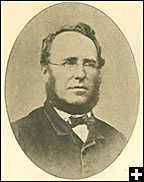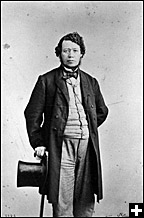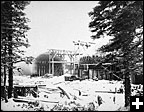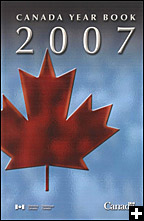Common menu bar links
The start of the Canada Year Book
Archived Content
Information identified as archived is provided for reference, research or recordkeeping purposes. It is not subject to the Government of Canada Web Standards and has not been altered or updated since it was archived. Please contact us to request a format other than those available.

The history of the Canada Year Book begins with the appointment of a young, energetic, ardent supporter of Confederation—Joseph Charles Taché—as deputy head of what was then called the Board of Registration and Statistics.
Taché, with a notable background in journalism, administration and medicine, was appointed in September 1864 and was charged with systematizing all activities of the board. He was interested in the “temporary and occasional employment of men of science for the collection and arrangement of Special Statistics, and the adoption, as official documents, of well-executed statistical labours, obtained from public associations, corporate bodies, and important companies.”
Reviewing the Blue Book

Under Taché’s new responsibilities was a long-needed review of the Blue Book, which was a common name for the Statement of the Offices, Names of Incumbents, Salaries and Other Information concerning the Public Service, an annual publication that provided structural and economic details on the Public Service of Upper and Lower Canada and was not available to the public. In his 1866 report, Honourable T. D’Arcy McGee highlights a need for change, proposing “that future editions embrace a much wider field of information so as to make this publication a complete repertory of the official statistics of the Dominion of Canada.”
The overhaul of the Blue Book was assigned to the Bureau of Agriculture. The 1864 edition was first version of the Blue Book to be made available to the public.
Recruiting Arthur Harvey

Mr. Arthur Harvey was chosen to be editor of the 1867 edition, as the duties of this sort of statistical compilation had largely fallen to his department in the past. Harvey was Fellow of the Statistical Society of London and had been editor of an annual volume of miscellaneous statistics collected from administrative operations and reports of various government departments and institutions published by the Department of Finance.
The Year-Book and Almanac of British North America for 1867; Being an Annual Register of Political, Vital and Trade Statistics, Tariffs, Excise and Stamp Duties; and All Public Events of Interest in Upper and Lower Canada; New Brunswick; Nova Scotia; Newfoundland; Prince Edward Island; and the West India Islands was published by a Montréal company, Lowe & Chamberlin, in November 1866.

Buying the new book for 12 ½ cents
The 1867 edition cost consumers only 12 ½ cents. With 12 ½ cents one could know, for instance, that on Saturday, February 9, the sun would rise at 7:17 a.m. in St. John’s, Newfoundland, and set at 5:15 p.m. that evening, or that a full moon would arrive in Montréal on May 18 at exactly 8:58 a.m.
The book was useful for many purposes, such remembering important holidays and forecasting the weather—like the expectation of a total 79.5 inches of snow in 1867. It was not, however, a definitive source for statistical information relevant to Canadians because it placed more serious statistics secondary to this light-hearted, fun information.
Harvey’s involvement in the book gave it a much-needed revival. In subsequent editions, more serious factual information was introduced, and the book evolved into the Canada Year Book, one of today’s most comprehensive statistical releases, published by Statistics Canada.
